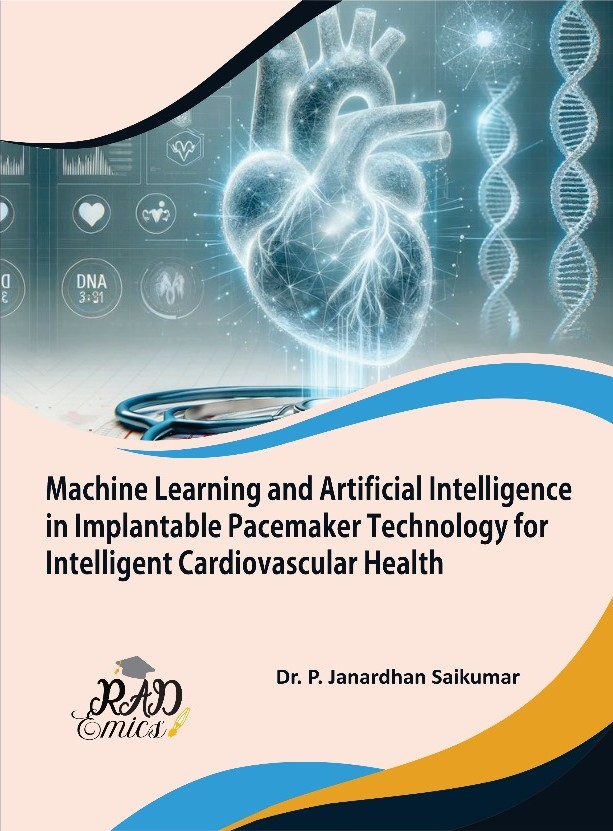
Peer Reviewed Chapter
Chapter Name : Artificial Intelligence Architectures for Real Time Arrhythmia Detection and Adaptive Pacing in Implantable Pacemakers
Author Name : Arivanantham Thangavelu, Satwik Chatterjee
Copyright: ©2025 | Pages: 36
DOI: 10.71443/9789349552586-01
Received: WU Accepted: WU Published: WU
Abstract
The integration of artificial intelligence (AI) within implantable pacemakers marks a significant advancement in cardiac rhythm management, offering new capabilities for real-time arrhythmia detection and adaptive pacing. Traditional pacemakers rely on static, pre-programmed pacing modes that may not respond optimally to sudden or complex arrhythmic episodes. By embedding lightweight AI algorithms, modern pacemakers can continuously analyze electrocardiogram (ECG) signals, detect irregular patterns with high accuracy, and dynamically adjust pacing strategies to match the patient’s physiological needs. This chapter explores state-of-the-art AI architectures suitable for resource-constrained implantable devices, including low-power microcontroller designs, hardware accelerators, and neuromorphic computing approaches. It examines real-time operating system (RTOS) integration and advanced power management strategies that extend battery life while ensuring deterministic, safe operation. The chapter also highlights critical research gaps in training data availability, algorithm robustness, regulatory validation, and ethical considerations surrounding autonomous decision-making in life-sustaining implants. By bridging biomedical engineering, embedded AI, and clinical requirements, this work provides a comprehensive overview of how AI-driven adaptive pacemakers can improve patient outcomes and shape the future of intelligent implantable medical devices.
Introduction
Cardiac arrhythmias remain one of the leading causes of sudden cardiac events worldwide, posing significant risks for morbidity and mortality if left unmanaged [1]. Implantable pacemakers have played a pivotal role for decades in maintaining heart rhythm for patients with bradyarrhythmias and conduction block disorders [2]. These devices deliver electrical impulses to stimulate cardiac contraction when the heart’s intrinsic rhythm fails to meet physiological demands [3]. Despite their life-saving role [4], most conventional pacemakers operate based on fixed or demand pacing algorithms with limited responsiveness to complex or unpredictable arrhythmic patterns [5].
Recent developments in artificial intelligence and edge computing present an opportunity to redefine the functionality of these critical devices [6]. The integration of real-time AI within implantable pacemakers enables the continuous monitoring and interpretation of electrocardiogram (ECG) signals at a level of sophistication that exceeds traditional rule-based approaches [7]. Lightweight machine learning models and deep neural network architectures can be optimized to detect subtle [8], early-stage arrhythmias and differentiate them from benign variations or noise [9]. This level of detection, coupled with adaptive control algorithms, can transform the pacemaker from a reactive device to a proactive, intelligent system capable of delivering patient-specific therapy [10].
Deploying AI models inside an implantable environment introduces unique engineering challenges [11]. Pacemakers must maintain strict power budgets, minimize heat generation, and ensure reliable long-term operation without compromising patient safety [12]. Achieving real-time arrhythmia detection and adaptive pacing demands advances in low-power microcontroller architectures [13], specialized hardware accelerators for neural networks, and novel computing paradigms such as neuromorphic chips [14]. Each of these solutions must fit within the physical constraints of an implantable form factor while ensuring biocompatibility and electromagnetic safety [15].